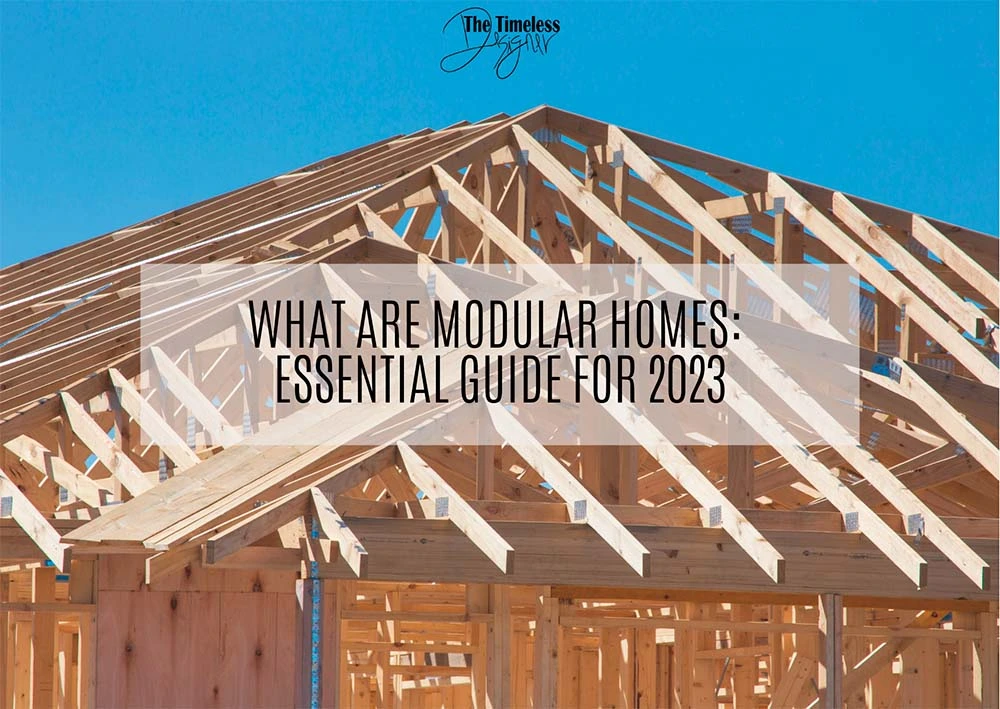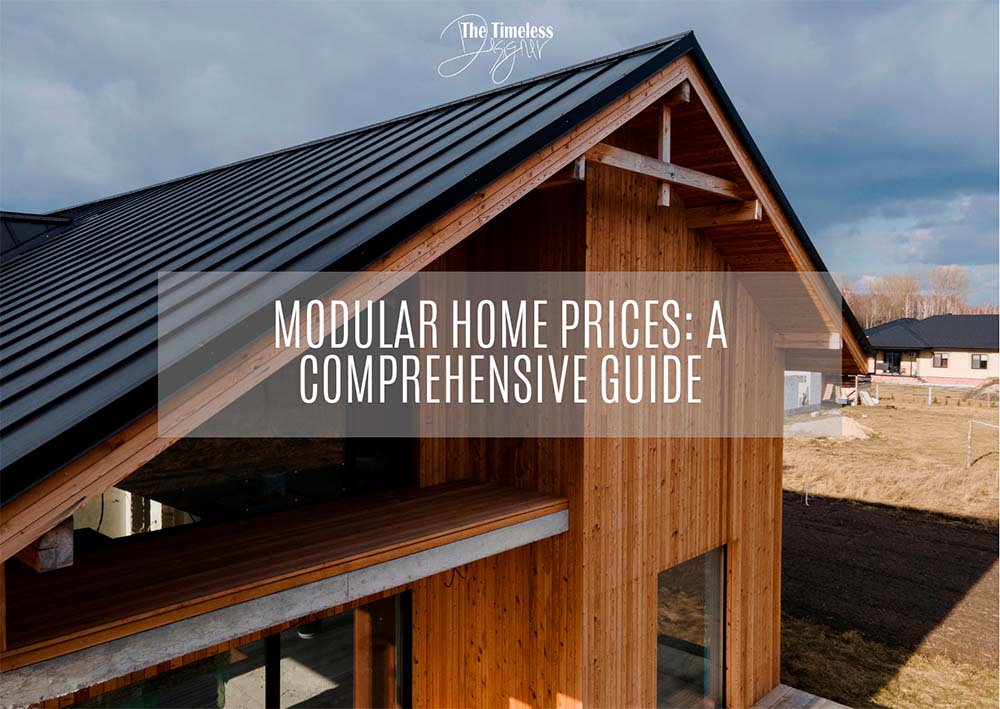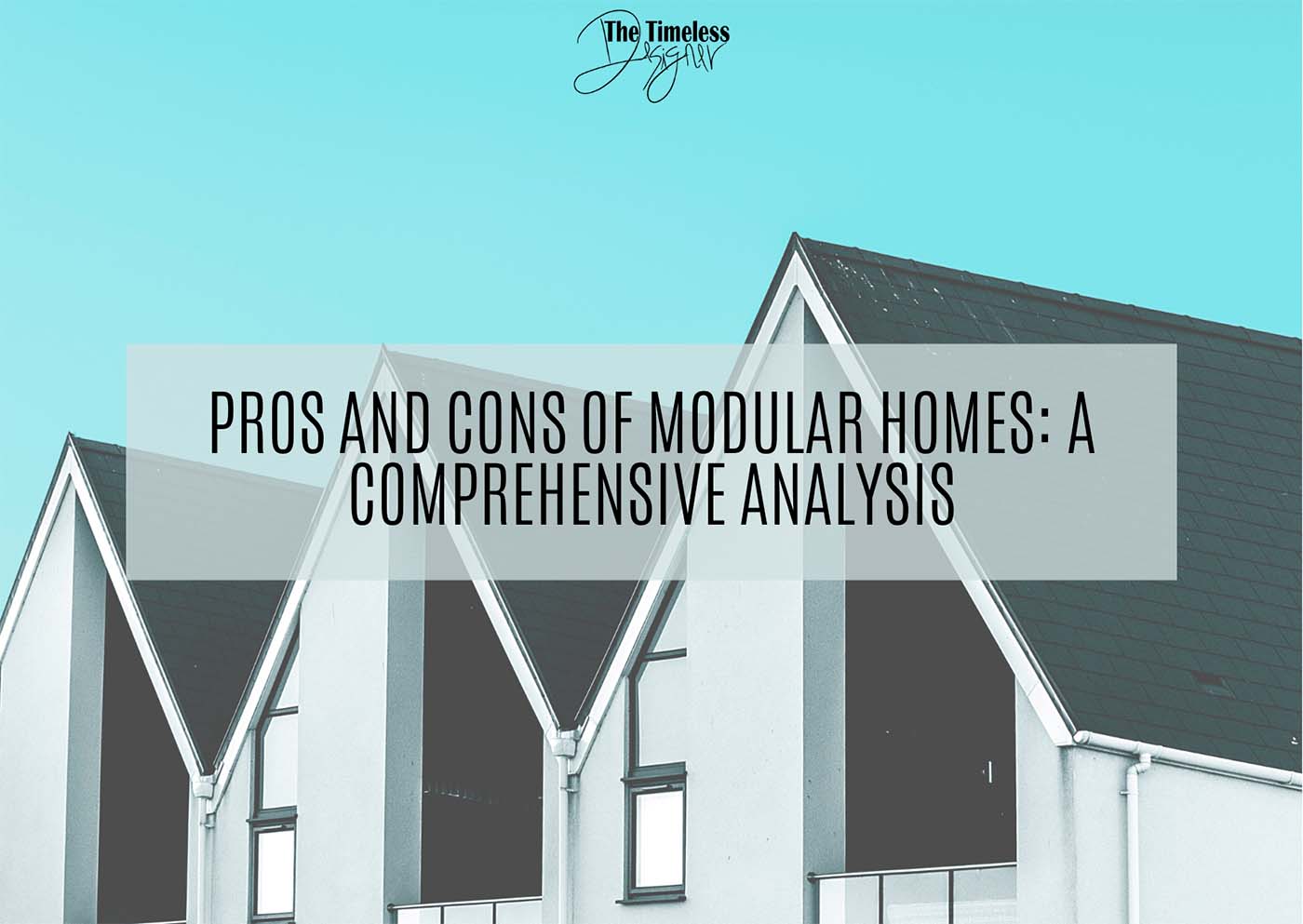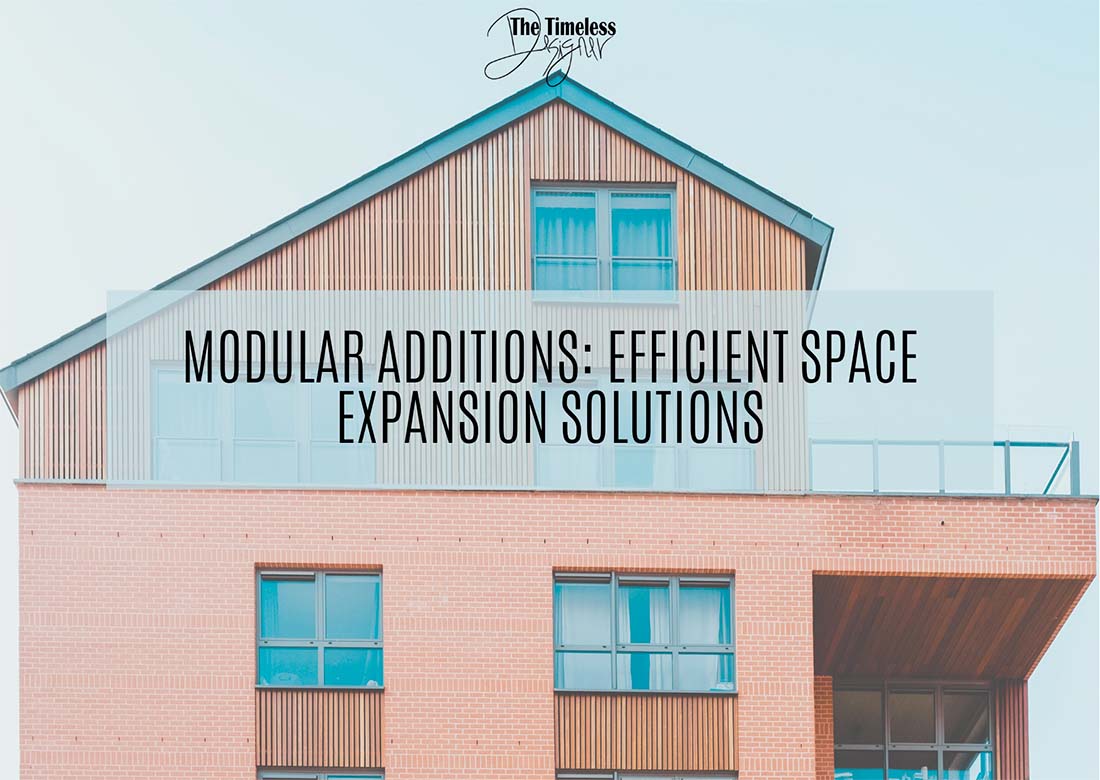Calling all aspiring homeowners! Have you ever found yourself overwhelmed by the lengthy, costly, and often unpredictable process of traditional home construction? Enter the world of modular homes—high quality, customizable, and time-efficient, they offer an exciting alternative.
Building a modular home typically takes 2 to 6 months, outpacing conventional methods by a whopping 30%. But remember, this journey isn’t always a smooth sail. Factors such as design complexities, permitting hurdles, and manufacturer capacities can create twists and turns, potentially prolonging your timeline. There’s nothing more frustrating than waiting for your dream home, right?
But fear not, dear reader! This comprehensive guide is here to illuminate the path of modular home construction. We’ll start by exploring what exactly a modular home is and why it might be a fantastic choice for you. We’ll then delve into the crucial factors that could impact the construction timeline and share tips on navigating them effectively. Finally, we’ll demystify potential hurdles and reveal strategies to keep your journey as smooth as possible. Ready to embark on your modular home journey? Let’s dive in!
What Is a Modular Home
A modular home is a type of prefabricated dwelling that is made up of multiple sections called modules. These modules are manufactured in controlled factory settings, which helps to ensure the quality and efficiency of the construction process. Modular homes are built to comply with state and local building codes, just like traditional site-built homes. As a result, they are considered real property and can be financed with a traditional mortgage.
One of the key differences between modular homes and site-built homes is the construction process. The modules are built and assembled off-site, often in as little as 6-7 days, before being transported to the home site. Once there, they are typically set on a permanent foundation and combined to create a complete home. This off-site construction process can save time and labor costs compared to traditional stick-built homes.
Modular homes have many advantages over site-built homes, such as:
- Faster construction time: Due to the controlled factory setting, modular homes can be built and assembled much faster than their site-built counterparts, which are subject to weather conditions and availability of materials.
- Cost-effective: Factory construction can help drive down the cost of materials and labor, making modular homes a more affordable option.
- Customization options: Modular homes offer a wide range of design possibilities, allowing homeowners to personalize their home to suit their individual needs. The design process can take anywhere from 4 to 12 weeks, depending on the complexity of the project.
- Quality control: Modular homes are built in factories, which allows for better supervision and quality control over the building process. This ensures that each module meets or exceeds the required building codes and standards.
Overall, modular homes are an efficient and affordable option for those looking to build a new home, without sacrificing quality or customization possibilities. They serve as a practical alternative to traditional stick-built homes, while still offering many of the same design and construction features.
How Long Does It Take to Build a Modular Home
Building a modular home typically takes around 2 to 6 months, from initial planning to final completion. This timeline includes design selection, obtaining necessary permits, site preparation, off-site construction of the modules, on-site assembly, and finishing touches. However, the answer to the question “how long does it take to build a modular home?” can vary based on factors such as the complexity of the design, weather conditions, and potential delays in permits or inspections. Now, let’s further unravel each of these stages for a more nuanced perspective on the process.
Initial Planning
The initial planning stage for building a modular home includes purchasing land, receiving permits, and designing the home. This process typically takes 6-9 weeks for permits and land purchasing, while the actual design can take anywhere from 0 to 12 weeks depending on the complexity and size of the house. During this time, homeowners will make decisions on various details such as flooring, cabinets, and roofing materials.
Manufacturing Process
Modular homes are built in a controlled environment, which enables a more efficient and streamlined construction process. The manufacturing process typically takes place in home building facilities where quality materials are used and fewer delays occur due to external factors like weather. It is common for these facilities to complete the construction of an off-site built home in about 6-7 days. The modular home’s foundation is built with wood floor joists attached to a steel frame and topped with OSB board as subfloor underlayment.
On-Site Assembly
Once the manufacturing process is complete, the modular home components are transported to the building site. There, the on-site assembly of these prefabricated sections takes place. The time it takes for on-site assembly varies depending on factors such as site preparation, but in general, a modular home can be fully assembled within four weeks.
Comparatively, the entire process of building a modular home typically takes 3-4 months to complete, whereas a traditional home may take 9-12 months. This shortened time frame is due to the controlled manufacturing process and efficient on-site assembly procedures associated with modular homes.
Factors Influencing Construction Time
Design Complexity
The design complexity of a modular home can greatly impact how long it takes to build a modular home. Highly intricate designs with many customized features may require additional time to manufacture and assemble. Simpler designs, on the other hand, allow for quicker production times and less room for potential errors or delays.
Manufacturing Capacity
Another important factor affecting the timeline of building a modular home is the manufacturing capacity of the factory. High demand for modular homes can lead to longer wait times, as factories may have to prioritize projects based on their current workload. Additionally, the size and resources of the facility can also determine how quickly they can produce and deliver a modular home.
Permitting and Inspections
Before a modular home can be constructed, it is necessary to obtain the appropriate permits and undergo inspections as required by local and state regulations. Depending on the jurisdiction and the specific requirements, this process may take anywhere from a few weeks to several months. The quicker the permits and inspections are completed, the faster the construction process can move forward.
Overall, various factors can influence the construction time of a modular home. Some modular homes can be completed in as little as 27 weeks, while others may extend beyond this timeframe due to complexity, manufacturing capacity, and permitting processes. Planning ahead and staying informed throughout the process can help to minimize potential delays and ensure a smooth construction experience.
Longevity of Modular Homes
Firstly, the construction process of modular homes takes place in a controlled environment, which ensures builders can take their time to do meticulous work and guarantee every detail is accurate. This controlled environment protects the home from weather-related damage during construction, leading to a better overall build quality that affects the lifespan of the modular home.
The materials used in modular homes are also crucial to their longevity. Modular homes must meet state and local building codes, just like site-built homes. This requirement means that they are constructed using materials that meet the necessary standards, such as wood floor joists attached to a steel frame and OSB board as a commonly used subfloor underlayment. These high-quality materials contribute to the durability and lifespan of modular homes.
In addition, insulation plays a significant role in how long modular homes last. Most modular homes today are well-insulated to protect against heat and cold, enabling them to deal with the elements more effectively. Some modular homes even boast a fire resistance rating of one to four hours, grade 11 wind resistance, and a live load capacity of 0.5 kN/m2 for the roof. These features help maintain the structural integrity of the home and extend its lifespan.
In summary, the longevity of modular homes depends on multiple factors like the construction process, materials used, and insulation properties. When built with high-quality materials and processes, modular homes can last for many years, providing a comfortable and durable living space for residents.
Cost of Modular Homes
Basic Costs
The cost for a modular home varies depending on factors such as the home’s size, style, and location. On average, modular homes cost between $50 to $100 per square foot for delivering the base unit, or $80 to $160 per square foot total with site prep, installation, and finishing.
Here is a breakdown of the basic costs involved in building a modular home:
- Purchasing land: Can vary greatly depending on location and size
- Receiving permits: Fees depend on local regulations
- Site preparation: Can range from $15,000 to $40,000
- Modular home unit: $50 to $100 per square foot
- Installation and finishing: Additional $30 to $60 per square foot
Customization and Upgrades
Customized floor plans, designs, and finishes can add $10 to $150 per square foot or more to the total cost of a modular home. The extent of customization and upgrades will depend on individual preferences and budget.
Some common customizations and upgrades include:
- High-end kitchen appliances
- Granite or quartz countertops
- Hardwood flooring
- Energy-efficient windows and insulation
- Solar panels
- Additional rooms or living spaces
- Exterior finishes such as premium siding or brick
Keep in mind that while upgrades can increase the overall cost of a modular home, they can also improve long-term functionality, return on investment, and overall satisfaction with the home.
Comparison with Traditional Construction
When comparing modular homes to traditional construction, one of the main differences is the time it takes to complete the project. Modular homes are built faster because they are constructed in a controlled, indoor environment, which eliminates most weather-related delays and allows for more efficient building processes.
A typical traditional home takes 9-12 months to build from the ground up, while a modular home usually takes 3-4 months. The modular home building process has several factors contributing to this faster construction time:
- Factory construction: Modular homes are built in sections, or modules, in a factory. This streamlined production process allows for greater efficiency, precision, and quality control. It also drives down the cost of materials and labor, compared to site-built homes.
- Simultaneous processes: While the modules are being built in the factory, the site preparation, such as clearing the land and laying the foundation, can take place concurrently. This parallel approach significantly reduces the overall construction timeline.
- Speed to occupancy: Once the modules are completed, they are transported to the building site and assembled. This process is typically much quicker than traditional construction, as the house’s components are already finished and just need to be connected.
- Cost predictability: Modular construction allows for a higher degree of cost predictability as materials and labor costs are generally more stable, and there is less chance of unforeseen issues or delays during construction.
Despite their benefits, modular homes may not be ideal for all situations. However, in many cases, modular homes provide a faster, more cost-effective, and sustainable option for building a new home. With the added benefit of quicker move-in times and a higher level of energy efficiency, they can be an attractive choice for homebuyers and builders alike.
Conclusion
In a rapidly evolving world, modular homes are shaking the foundation of traditional home construction. Marrying high-quality design with cutting-edge efficiency, they offer a tantalizing blend of speed, affordability, and customization. Imagine this: in just 2 to 6 months, you could see your dream home come to life. A timeline that far outstrips the lengthy process tied to conventional homes, making modular homes a captivating prospect for the modern homeowner.
However, the pathway to this dream isn’t always a straight line. The complexity of your chosen design, the permitting procedures, and the factory’s capacity can all have their say in the timeline. Still, every turn in the journey is a step towards creating a space that’s more in tune with your unique lifestyle and aspirations.
In closing, constructing your dream abode need not be a slow, tiresome affair. Modular homes offer a viable, innovative choice, a bridge to your dream home that’s built faster and smarter. So, as you embark on your homebuilding journey, remember: your patience, foresight, and a clear understanding of your unique requirements will be your trusted guides in this exciting endeavor. Soar high with your dreams, and let modular homes carry you there.




